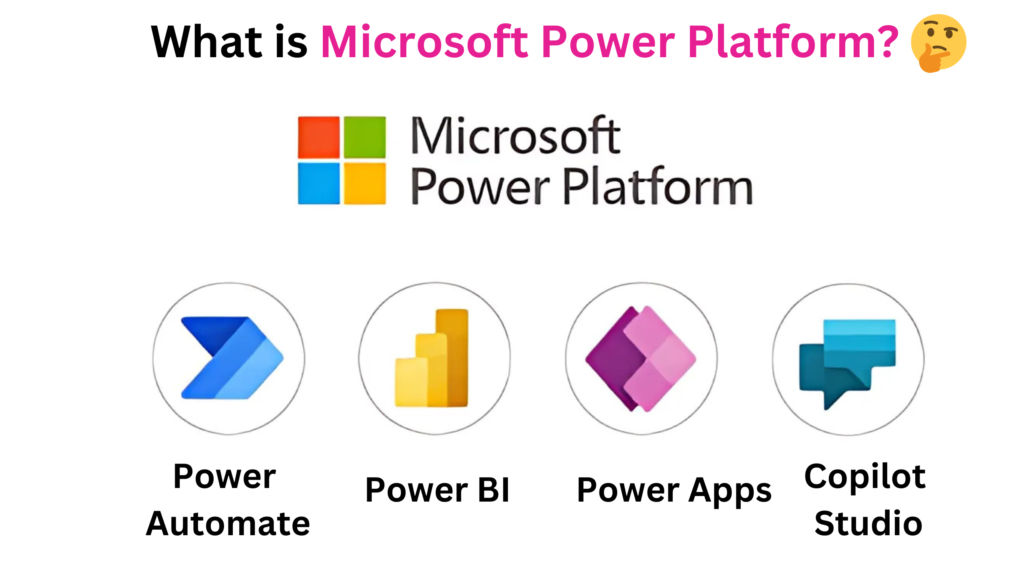

Microsoft Power Platform is a comprehensive suite of low-code tools designed to empower individuals and organizations to analyze data, automate processes, build solutions, and create virtual agents. By integrating seamlessly with various Microsoft services and third-party applications, it enables users to drive digital transformation and enhance business productivity.
Components of Microsoft Power Platform
Power BI: A business analytics tool that allows users to visualize data through interactive dashboards and reports. It enables informed decision-making by providing insights from various data sources.
Power Apps: A platform that facilitates the development of custom applications with minimal coding. Users can create tailored solutions to address specific business challenges, enhancing operational efficiency.
Power Automate: Formerly known as Microsoft Flow, this service automates repetitive tasks and workflows. It connects different applications and services, streamlining business processes and reducing manual efforts.
Power Pages: A low-code development platform for building and launching custom, responsive business websites. It enables users to create data-centric web experiences with ease.
Key Features and Benefits
Low-Code Development: Power Platform’s intuitive interfaces and pre-built templates allow users with varying technical expertise to develop applications and automate processes without extensive coding knowledge.
Integration Capabilities: The platform seamlessly integrates with Microsoft 365, Dynamics 365, Azure, and numerous third-party services, providing a unified ecosystem for business solutions.
Data Connectivity: With Microsoft Dataverse, formerly known as Common Data Service, users can securely store and manage data used by business applications, ensuring consistency and accessibility across the organization.
AI Integration: Incorporating AI Builder and Copilot Studio, Power Platform enables users to infuse artificial intelligence into their apps and workflows, enhancing functionality and user experience.
Use Cases
Custom Business Applications: Organizations can develop applications tailored to their unique processes, such as inventory management systems or customer service portals, using Power Apps.
Process Automation: Routine tasks like data entry, approval workflows, and notifications can be automated with Power Automate, freeing up employee time for more strategic activities.
Data Analysis and Reporting: Power BI allows businesses to consolidate data from multiple sources, creating comprehensive reports that drive strategic decision-making.
Customer Engagement: Through Power Pages, companies can build engaging websites that provide customers with self-service options, enhancing satisfaction and reducing support workloads.
Getting Started with Microsoft Power Platform
To embark on your journey with Power Platform, consider the following steps:
Explore Learning Resources: Microsoft offers extensive documentation, tutorials, and community forums to help users familiarize themselves with the platform’s capabilities.
Identify Business Needs: Assess your organization’s processes to pinpoint areas where custom applications or automation can add value.
Start Small: Begin with a pilot project to understand the development process and demonstrate the platform’s potential within your organization.
Leverage Community Support: Engage with the Power Platform community to share experiences, seek advice, and discover best practices.
By harnessing the power of Microsoft Power Platform, organizations can drive innovation, enhance efficiency, and adapt to the evolving demands of the modern business landscape.